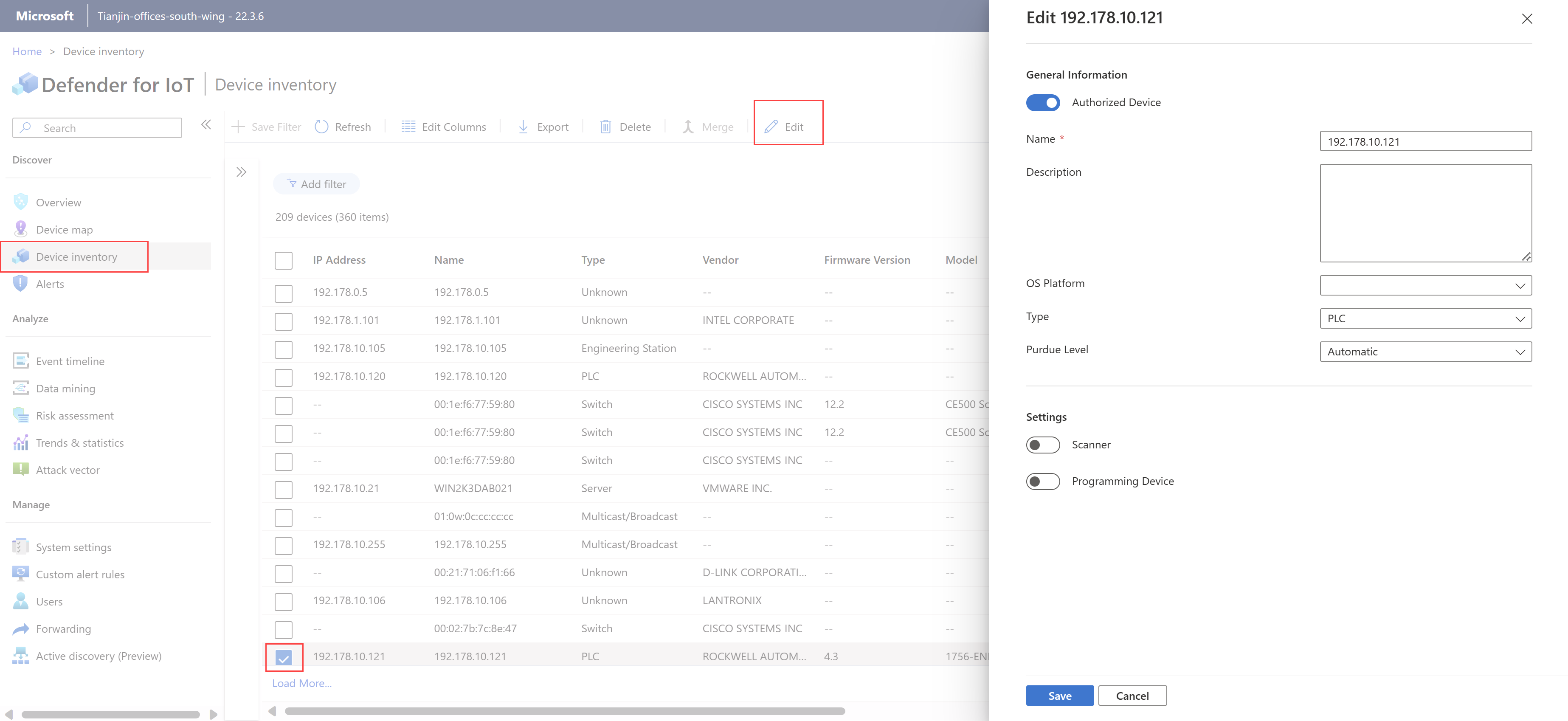Note
Access to this page requires authorization. You can try signing in or changing directories.
Access to this page requires authorization. You can try changing directories.
This article is one in a series of articles describing the deployment path for Operational Technology (OT) monitoring with Microsoft Defender for IoT, and describes how to review your device inventory and enhance security monitoring with fine-tuned device details.
Prerequisites
Before performing the procedures in this article, make sure that you have:
An OT sensor installed, configured, and activated, with device data detected.
Access to your OT sensor as Security Analyst or Admin user. For more information, see On-premises users and roles for OT monitoring with Defender for IoT.
This step is performed by your deployment teams.
View the device inventory on your OT sensor
Sign into your OT sensor and select the Device inventory page.
Select Edit Columns to make changes to the grid layout and display more data fields for reviewing the data detected for each device.
We especially recommend reviewing data for the Name, Type, Authorization, Scanner device, and Programming device columns.
Review the devices listed in the device inventory, and identify the devices whose device properties must be edited.
Edit device properties per device
For each device where you need to edit device properties:
Select the device in the grid and then select Edit to view the editing pane. For example:
Edit any of the following device properties as needed:
Name Description Authorized Device Select if the device is a known entity on your network. Defender for IoT doesn't trigger alerts for learned traffic on authorized devices. Name By default, shown as the device's IP address. Update this to a meaningful name for your device as needed. Description Left blank by default. Enter a meaningful description for your device as needed. OS Platform If the operating system value is blocked for detection, select the device's operating system from the dropdown list. Type If the device's type is blocked for detection or needs to be modified, select a device type from the dropdown list. For more information, see Supported devices. Purdue Level If the device's Purdue level is detected as Undefined or Automatic, we recommend selecting another level to fine-tune your data. For more information, see Placing OT sensors in your network. Scanner Select if your device is a scanning device. Defender for IoT doesn't trigger alerts for scanning activities detected on devices defined as scanning devices. Programming device Select if your device is a programming device. Defender for IoT doesn't trigger alerts for programming activities detected on devices defined as programming devices. Select Save to save your changes.
Enhance device data (optional)
You might want to increase device visibility and enhance device data with more details than the default data detected.
To increase device visibility to Windows-based devices, use the Defender for IoT Windows Management Instrumentation (WMI) tool.
If your organization's network policies prevent some data from being ingested, import the extra data in bulk.

